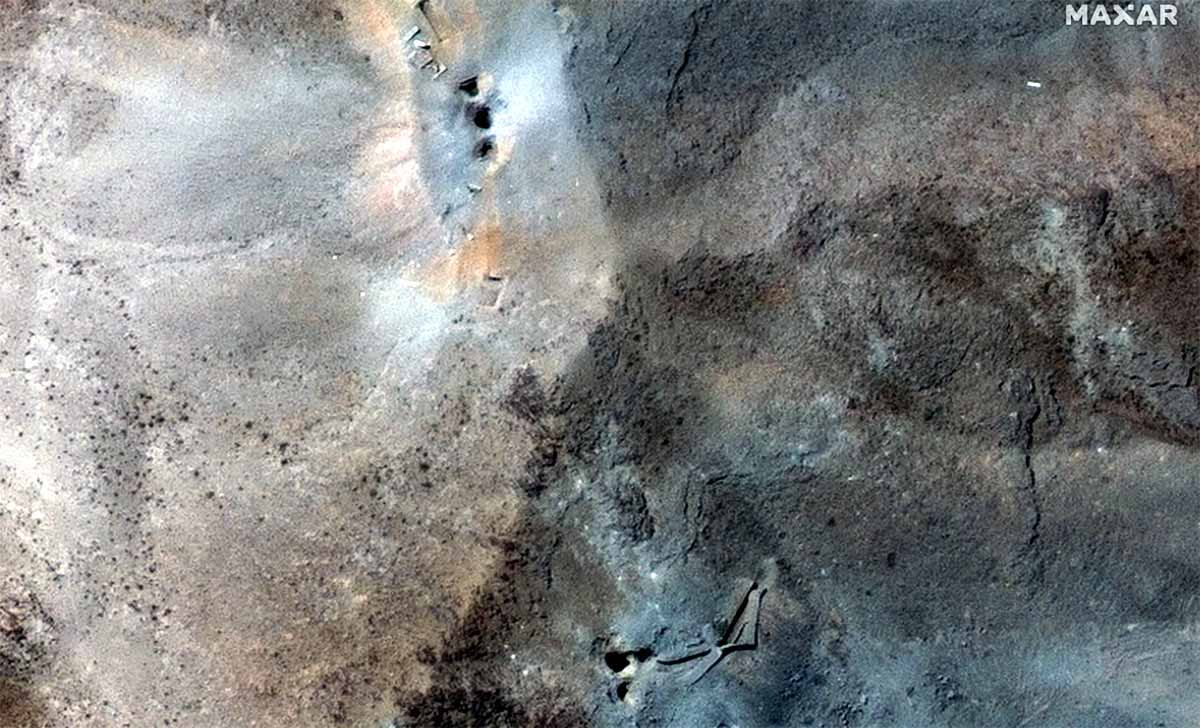On June 21, 2025, the United States launched a historic military operation aimed at targeting Iran's nuclear capabilities—Operation Midnight Hammer. This operation witnessed the deployment of seven B-2 Spirit stealth bombers dropping 14 Massive Ordnance Penetrator (MOP) bombs on Iran's highly secured nuclear site at Fordow.
The latest satellite images from Maxar reveal at least six munition craters on the upper ridge of Fordow. The US asserts that the operation was a complete success. Iran, on the other hand, did not retaliate, as their defense systems could not detect these stealth aircraft.
Operation Midnight Hammer was a covert and high-risk military mission by the United States intended to dismantle Iran's nuclear weapon-making capabilities. Launched on the night of June 21, 2025, the operation involved more than 125 US aircraft, with the notable seven B-2 stealth bombers. General Dan Cain, the Pentagon's Chairman of the Joint Chiefs of Staff, described it as "the largest B-2 strike ever."

Source: aajtak
Timing: The attack occurred on the morning of June 22, from 1:10 AM to 1:35 AM local time.
Flight Path: B-2 bombers embarked on an 18-hour journey from Missouri's Whiteman Air Force Base, utilizing limited communications to maintain the mission's secrecy.
Strategy: The US executed deception maneuvers over the Pacific Ocean, ensuring Iran was unaware of the impending strike.
Fordow is Iran's strongest and most deeply buried nuclear site, nestled under a mountain approximately 100 miles south of Tehran, and 80-90 meters underground. It is critical for uranium enrichment, with Iran producing enriched uranium up to 83.7%, nearing the 90% required for nuclear weapons.

Source: aajtak
Security: Fordow is shielded by Russian-engineered S-300 air defense systems and thick rock formations, rendering it almost impossible to destroy.
Significance: This site forms the heart of Iran's nuclear program, and dismantling it was a top priority for both Israel and the US.
Fresh satellite images from Maxar (June 20, 2025) illustrate six large craters on Fordow's upper ridge, highlighting the GBU-57 MOP bombs' impact. These craters are directly above the underground facility where uranium enrichment occurs.
American claims suggest that Iran did not fire a single shot in retaliation. The reasons are...
B-2 Stealth Technology:
Iran's S-300 air defense systems failed to detect the B-2 bombers.
Surprise Attack:
The US misled Iran with deceptive maneuvers across the Pacific Ocean.
No Resistance:
General Dan Cain confirmed no Iranian surface-to-air missiles were launched, nor did fighter jets scramble. Yet, Iran condemned the attack as an "infringement of international law" and threatened repercussions. Foreign Minister Abbas Araghchi mentioned that all options remain open.

Source: aajtak
In addition to Fordow, the US targeted Natanz and Isfahan nuclear sites...
Natanz: Iran's largest uranium enrichment facility was hit by Tomahawk cruise missiles launched from the USS Georgia submarine, and two MOP bombs dropped from a B-2, damaging upper structures.
Isfahan: Dedicated to converting uranium into nuclear fuel. Over 24 Tomahawk missiles were launched, damaging six buildings.
IAEA Report: The strikes resulted in no radioactive leaks. Iran claims its nuclear sites remain operational.
American Claim:
President Donald Trump hailed it as a monumental military victory, asserting that Iran's nuclear sites had been utterly destroyed. Defense Secretary Pete Hegseth labeled it a bold and brilliant mission. General Dan Cain remarked that preliminary assessments indicated severe damage to all three sites though a comprehensive evaluation would take time.
Iranian Claim:
Iran's Atomic Energy Organization deemed the attacks brutal but insisted that its nuclear endeavors would persist. Iran professed to have evacuated all three sites beforehand.

Source: aajtak
Does Fordow Stand in Ruin?
American Claim:
Trump and Hegseth stated Fordow was totally annihilated.
Maxar Images:
Six craters reveal impact on the upper ridge, yet the extent of deeper bunker damage remains uncertain.
Iranian Assertion:
Fordow remains operational, with uranium relocated to a secure location.
IAEA:
No radioactive leaks detected, but a full damage assessment is ongoing.
Experts believe that completely destroying Fordow would require multiple bombs on a single spot, a task fraught with complexity.




